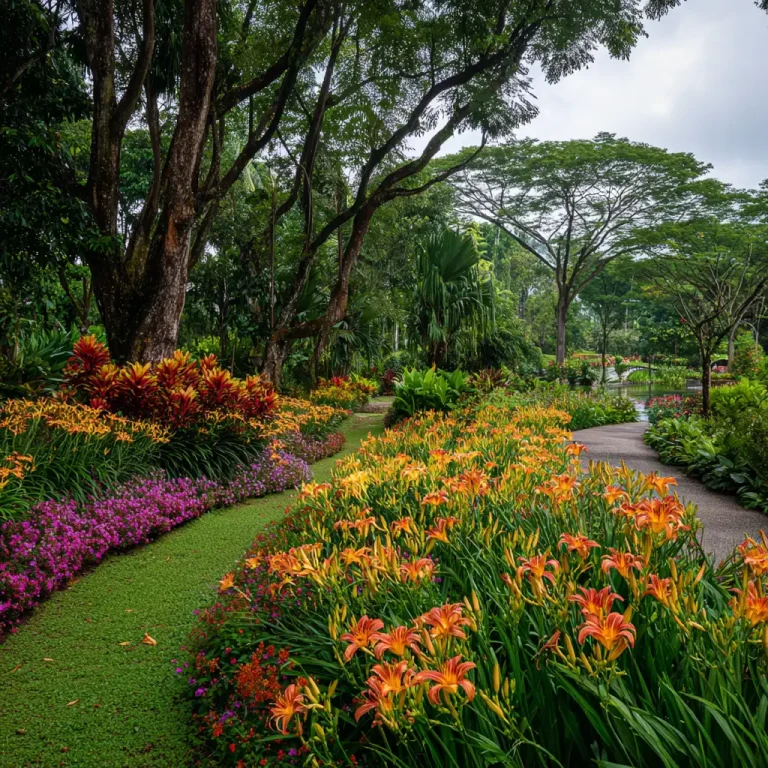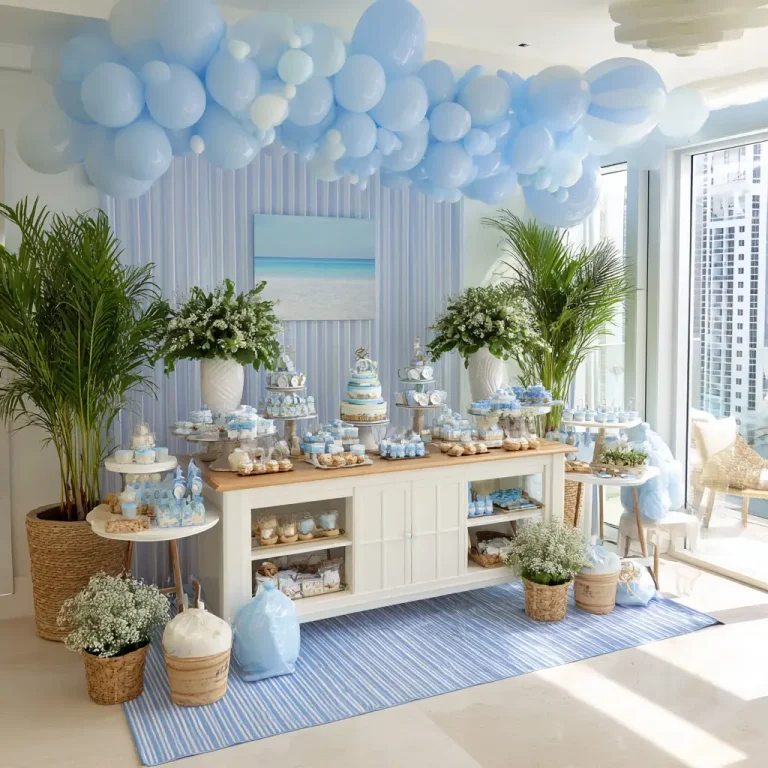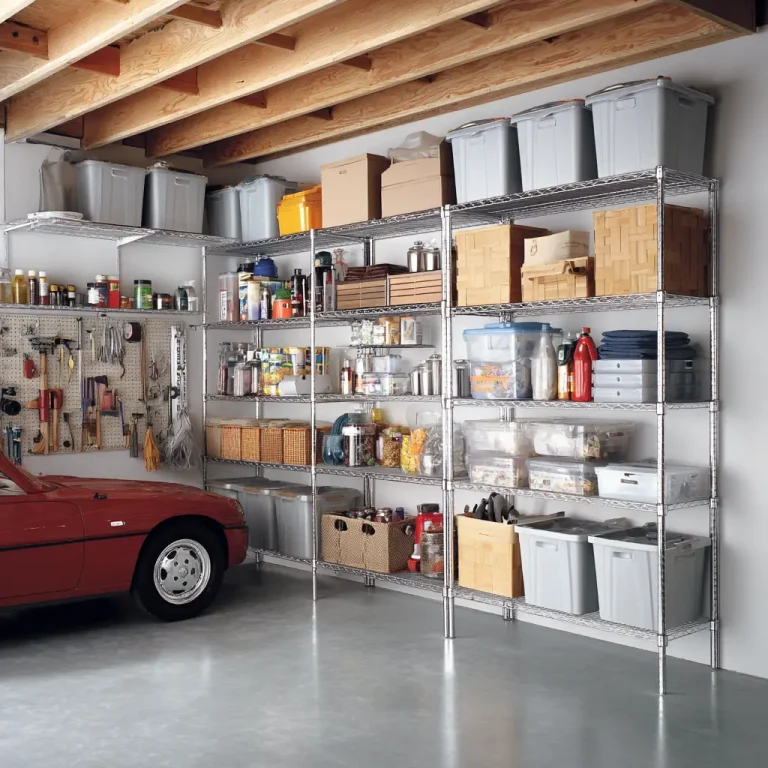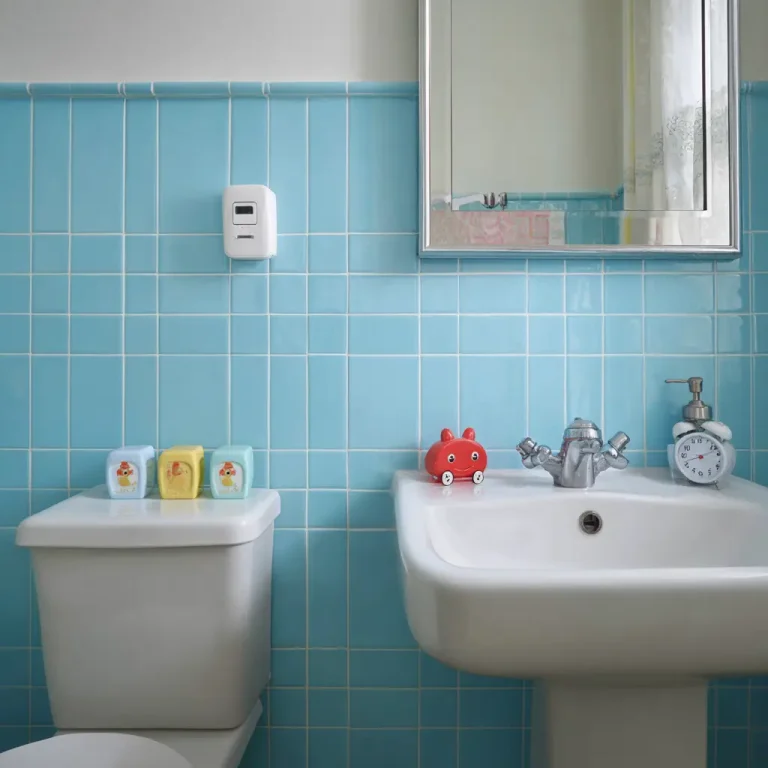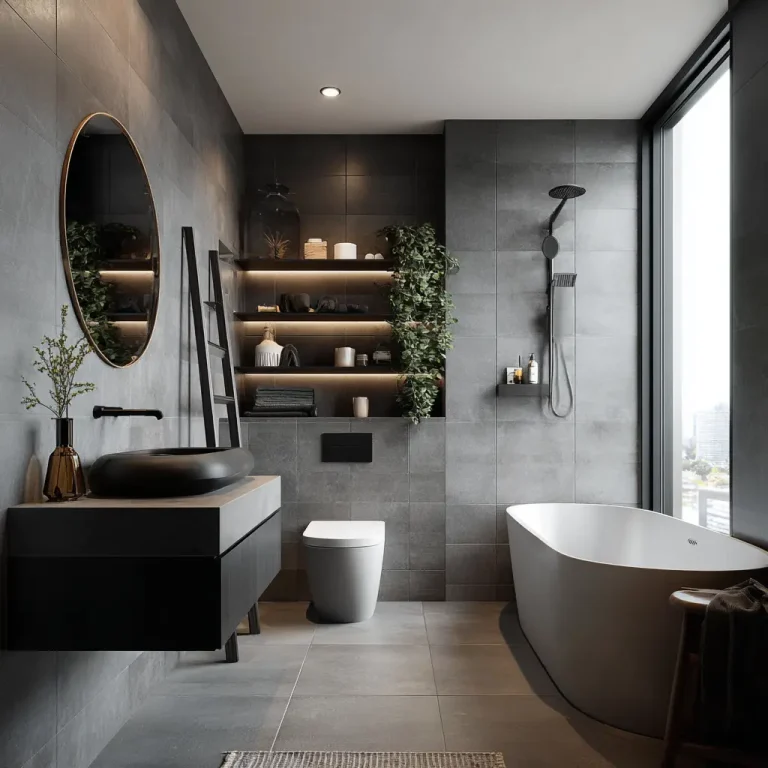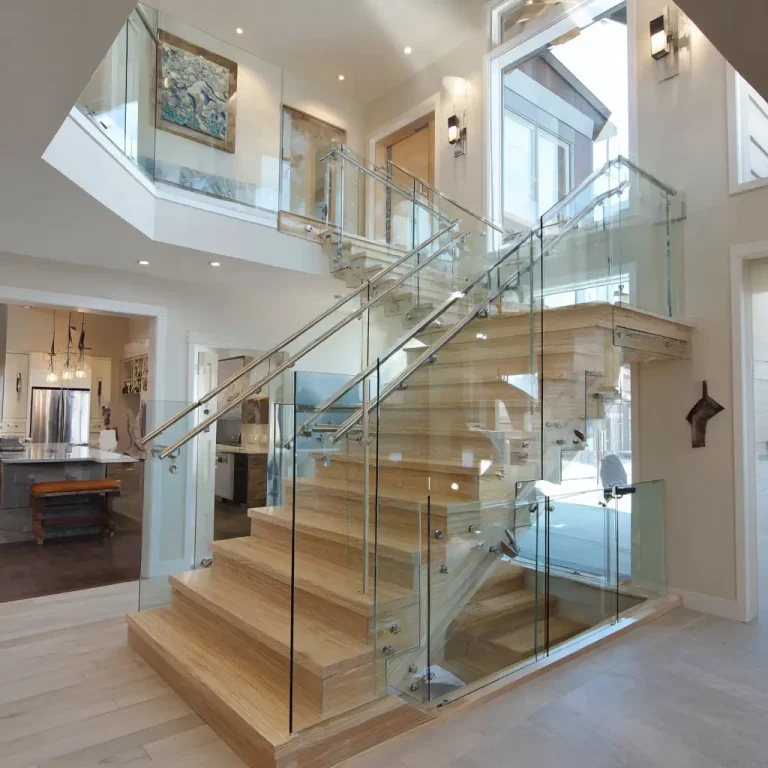21 Home Garden Design Ideas to Inspire Your Outdoor Space
Creating a garden is about crafting a space where nature meets intention. Whether you’re working with a modest balcony or a sprawling backyard, your garden should tell a story — your story. A thoughtfully designed home garden can serve as a retreat, a place to entertain, or even a productive space for growing your own food. Here are 21 diverse and creative garden design ideas to help you make the most of your outdoor living area.
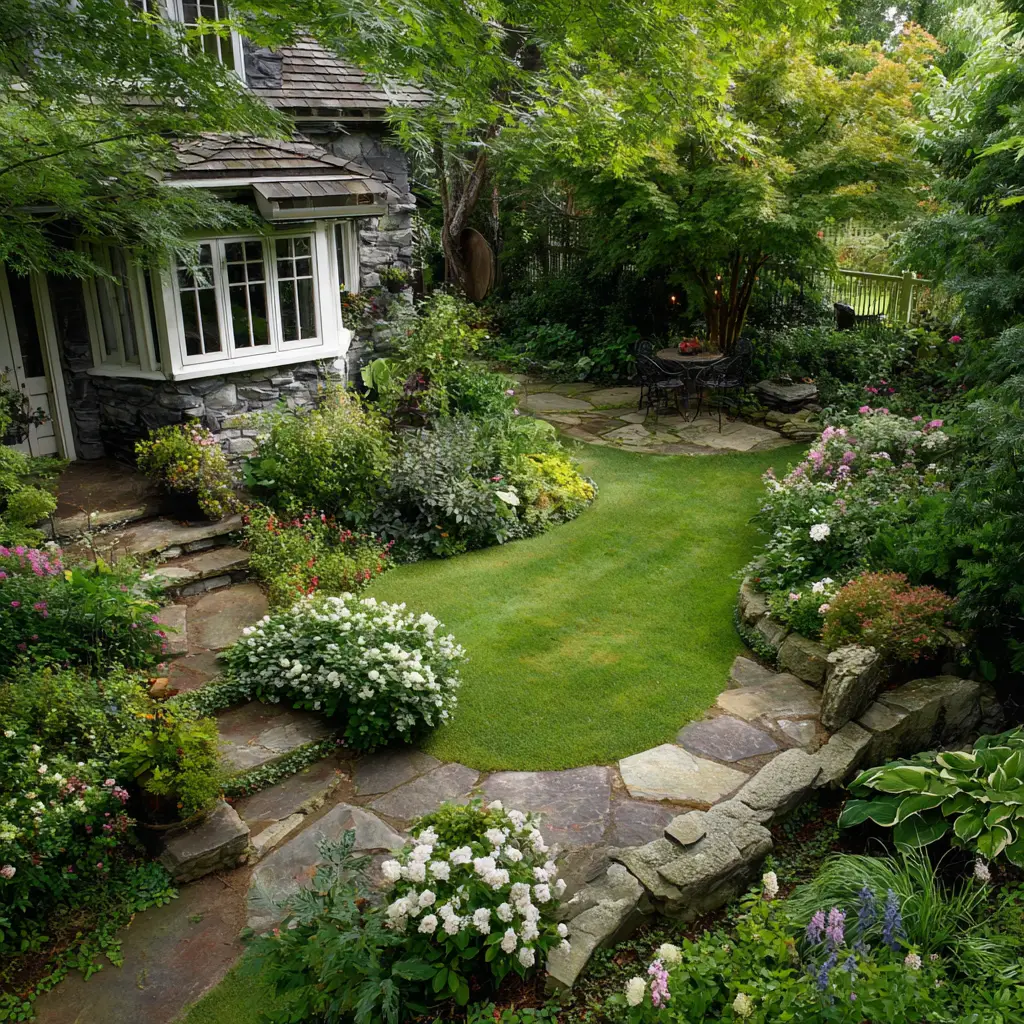
1. Zen Garden Retreat
Zen gardens offer a tranquil atmosphere inspired by Japanese design principles. These gardens focus on simplicity, balance, and mindfulness. Raked gravel patterns mimic the flow of water, while large stones symbolize mountains or islands. Minimalist plantings like moss, bonsai, and bamboo provide greenery without clutter. A Zen garden is ideal for those who seek calm and serenity after a long day.
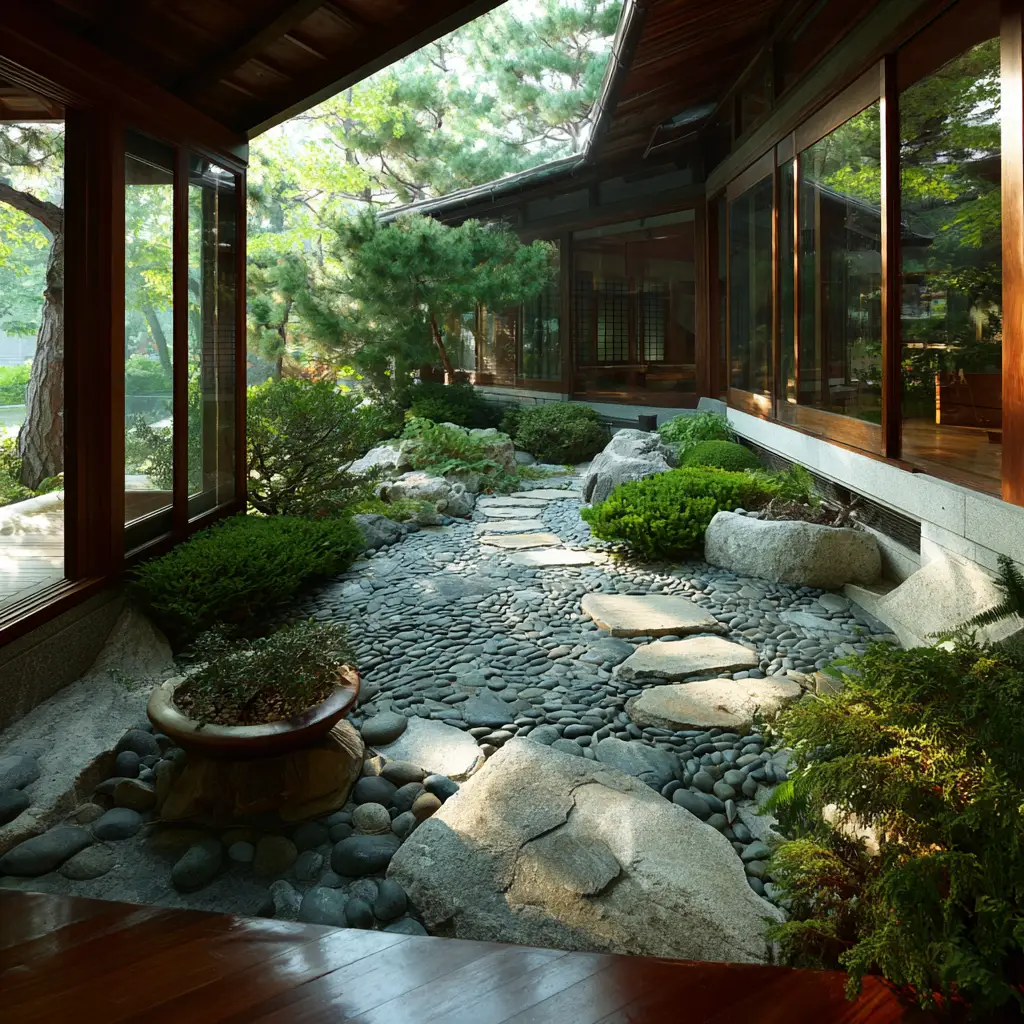
2. Vertical Garden Wall
If floor space is limited, go vertical. Vertical gardens are practical for patios, balconies, or narrow side yards. They can be created with trellises, pocket planters, or mounted pots on fences. Choose trailing plants like ivy, herbs, or succulents to create lush, living walls. Besides adding visual interest, vertical gardens can improve air quality and even provide insulation for your home.
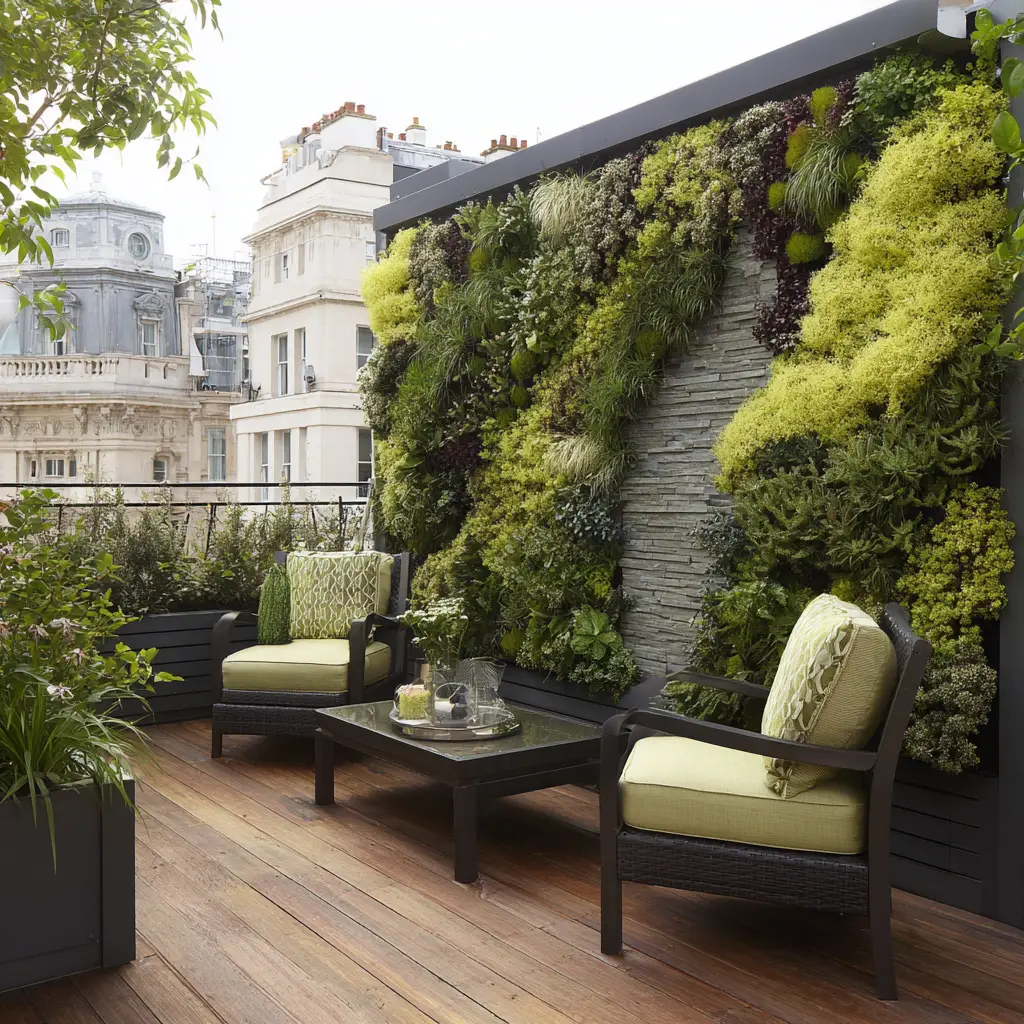
3. Cottage Garden Charm
A cottage garden overflows with color, texture, and fragrance. It often features a mix of annuals and perennials like roses, hollyhocks, daisies, and lavender. Plants grow densely and spill into paths, creating a wild but romantic look. Decorative elements like birdbaths, picket fences, and vintage garden tools can enhance the nostalgic atmosphere. This style invites pollinators and adds a storybook feel to your yard.
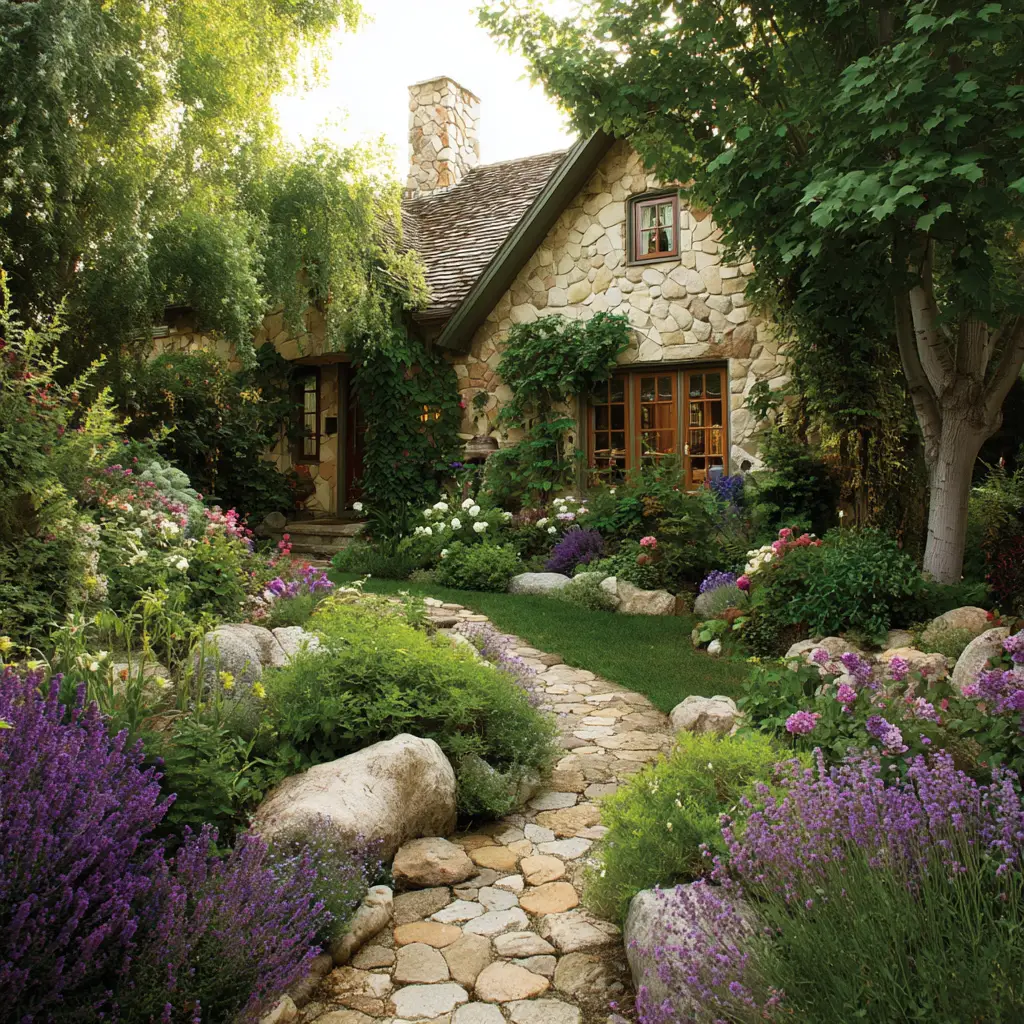
4. Edible Landscaping
Why not grow beauty and bounty at the same time? Edible landscaping integrates fruits, vegetables, and herbs with ornamental plants. Imagine marigolds planted alongside tomatoes or blueberry bushes lining a walkway. Not only do you get fresh, organic food, but it’s also a great way to teach kids about gardening and sustainability. Use companion planting techniques to boost growth and deter pests naturally.
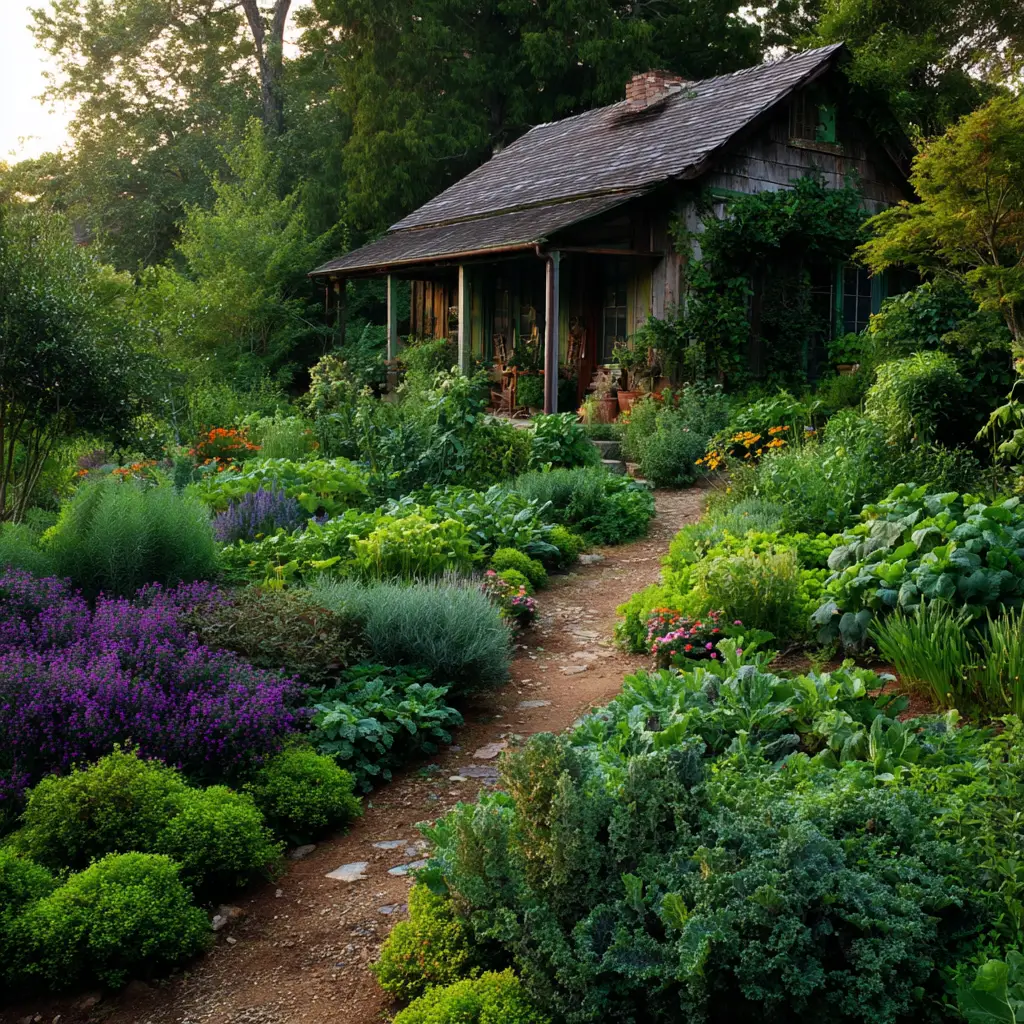
5. Modern Minimalist
Clean lines, geometric shapes, and a neutral color palette define the modern minimalist garden. Materials like concrete, steel, and gravel pair well with structured greenery such as boxwood, ornamental grasses, or sculpted evergreens. Minimalist gardens often focus on hardscaping, with plants as accents rather than the main event. This style suits contemporary homes and urban settings where sleek design is preferred.
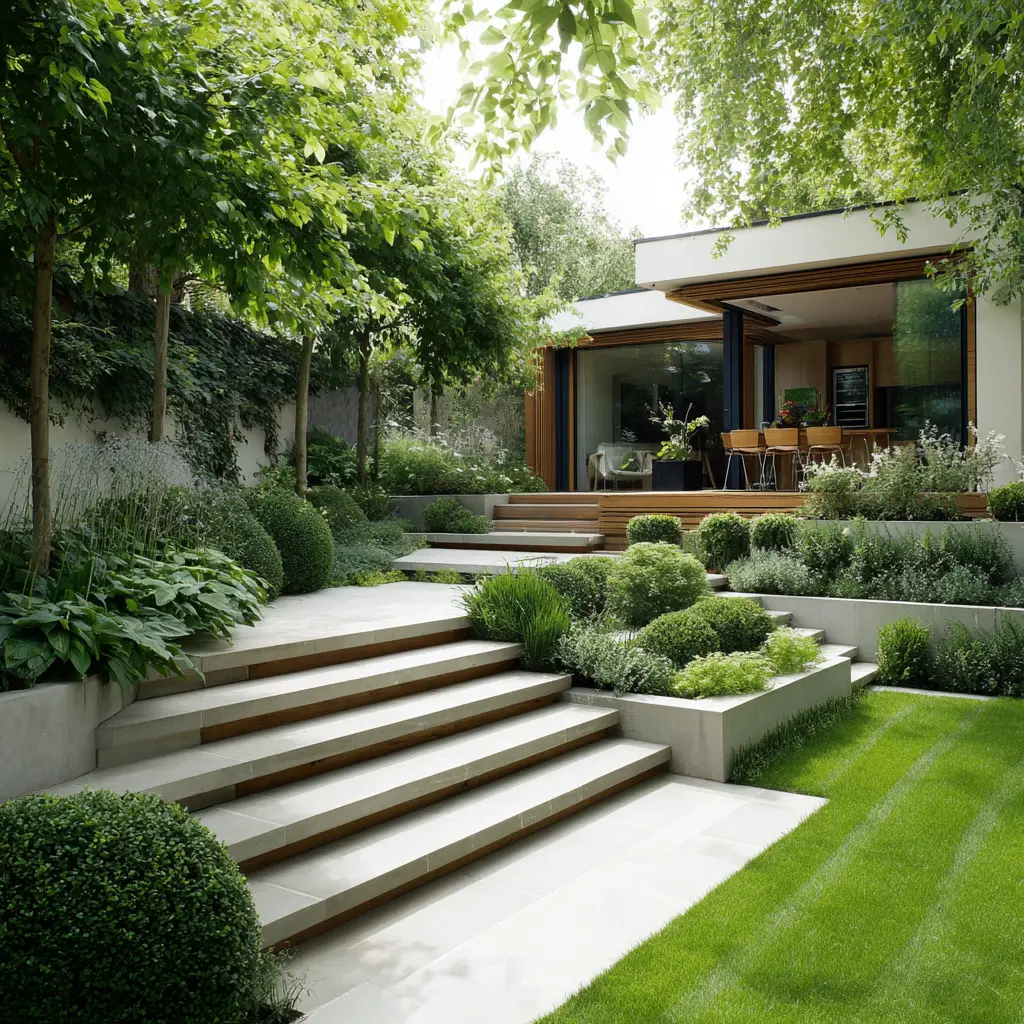
6. Wildlife-Friendly Haven
Transform your garden into a sanctuary for birds, bees, and butterflies. Choose native flowering plants that provide nectar, install bird feeders and bee hotels, and create water sources like shallow basins. Avoid pesticides, and allow some natural wildness to remain. Even small gardens can make a big difference in supporting local biodiversity and reconnecting people with the natural world.
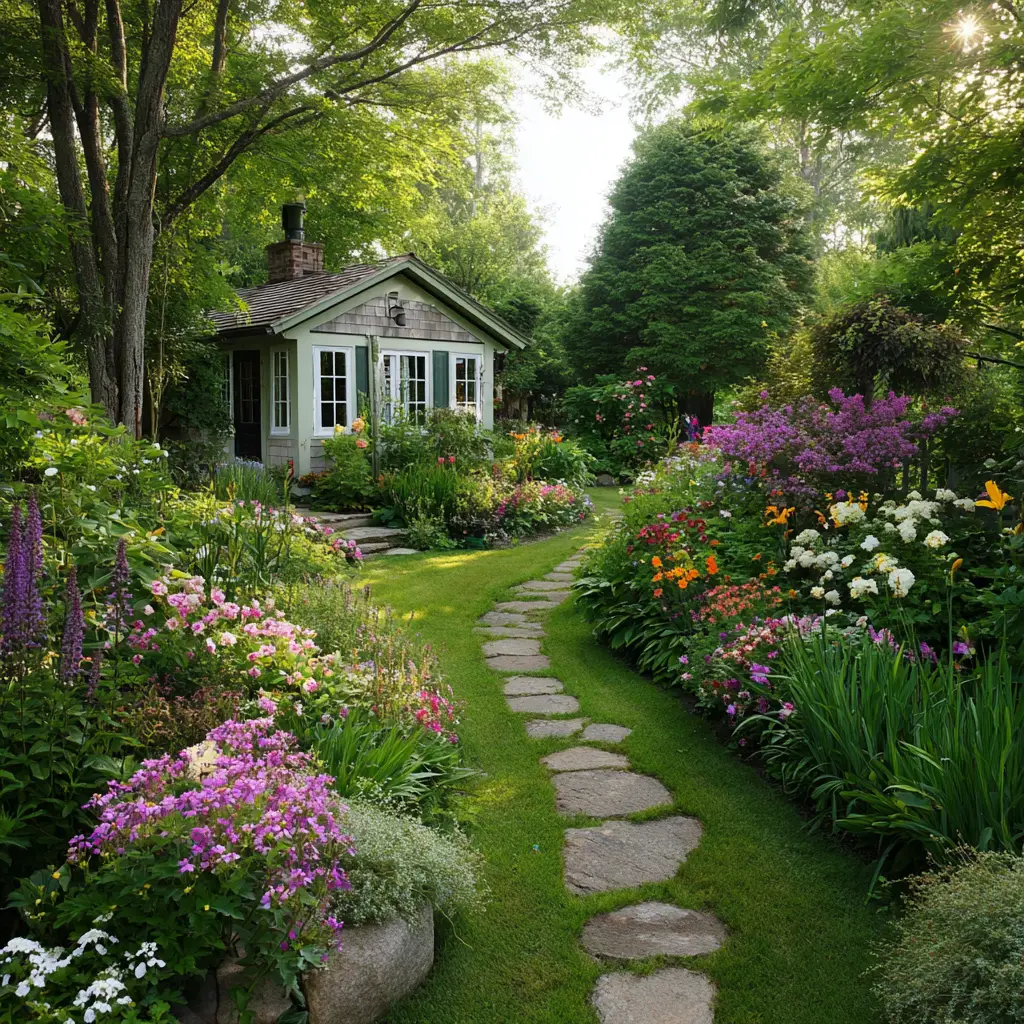
7. Mediterranean Courtyard
Inspired by southern Europe, Mediterranean gardens are perfect for warm, dry climates. Use terracotta pots, stone pathways, and warm-toned tiles to capture the essence of coastal Italy or Spain. Plant drought-tolerant species like lavender, rosemary, olive trees, and succulents. Add a shaded seating area with a pergola or arbor draped in vines for a cozy, sun-drenched retreat.
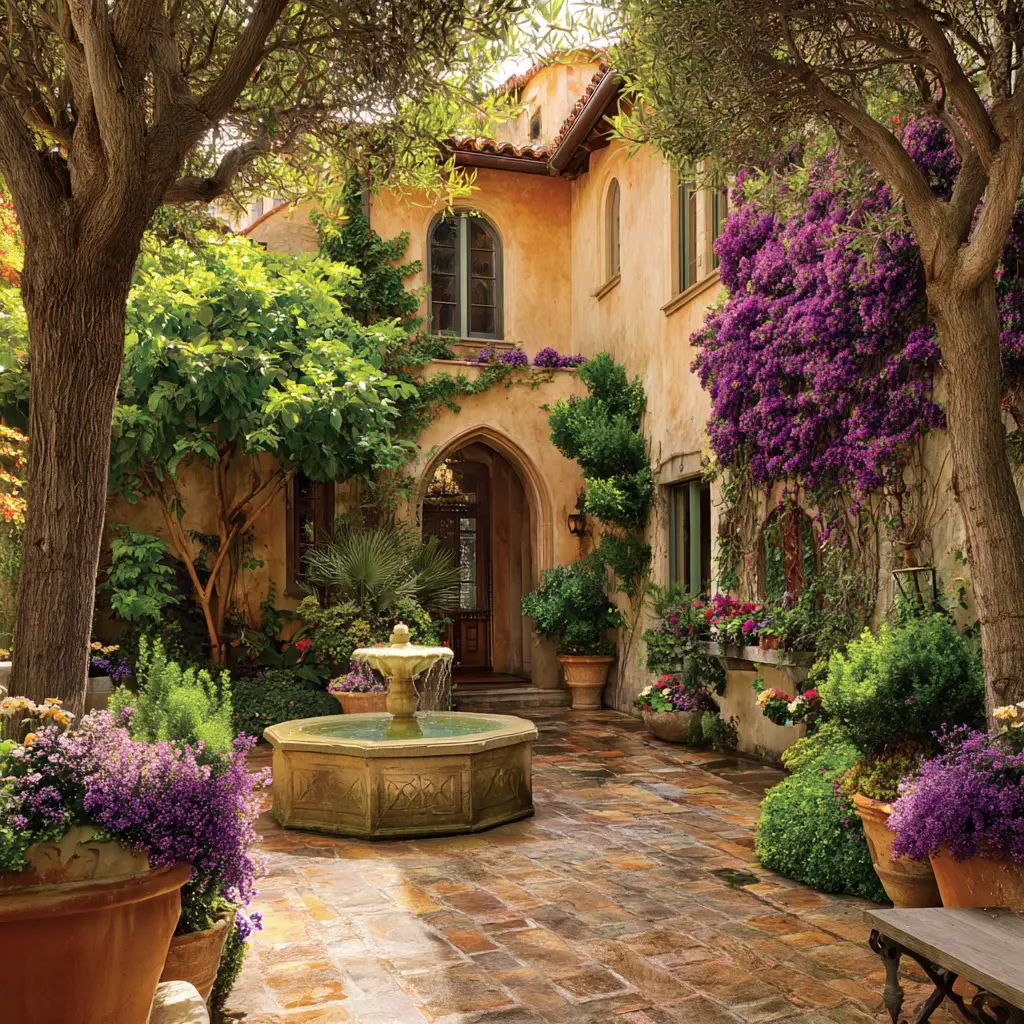
8. Rooftop Garden Escape
Urban rooftops can be transformed into vibrant green spaces. Use lightweight containers and raised beds filled with compact vegetables, herbs, and flowering plants. Windbreaks, shade sails, and privacy screens can help create a more comfortable environment. Consider adding seating, lighting, and even a small water feature to turn your rooftop into a secluded paradise high above the city.
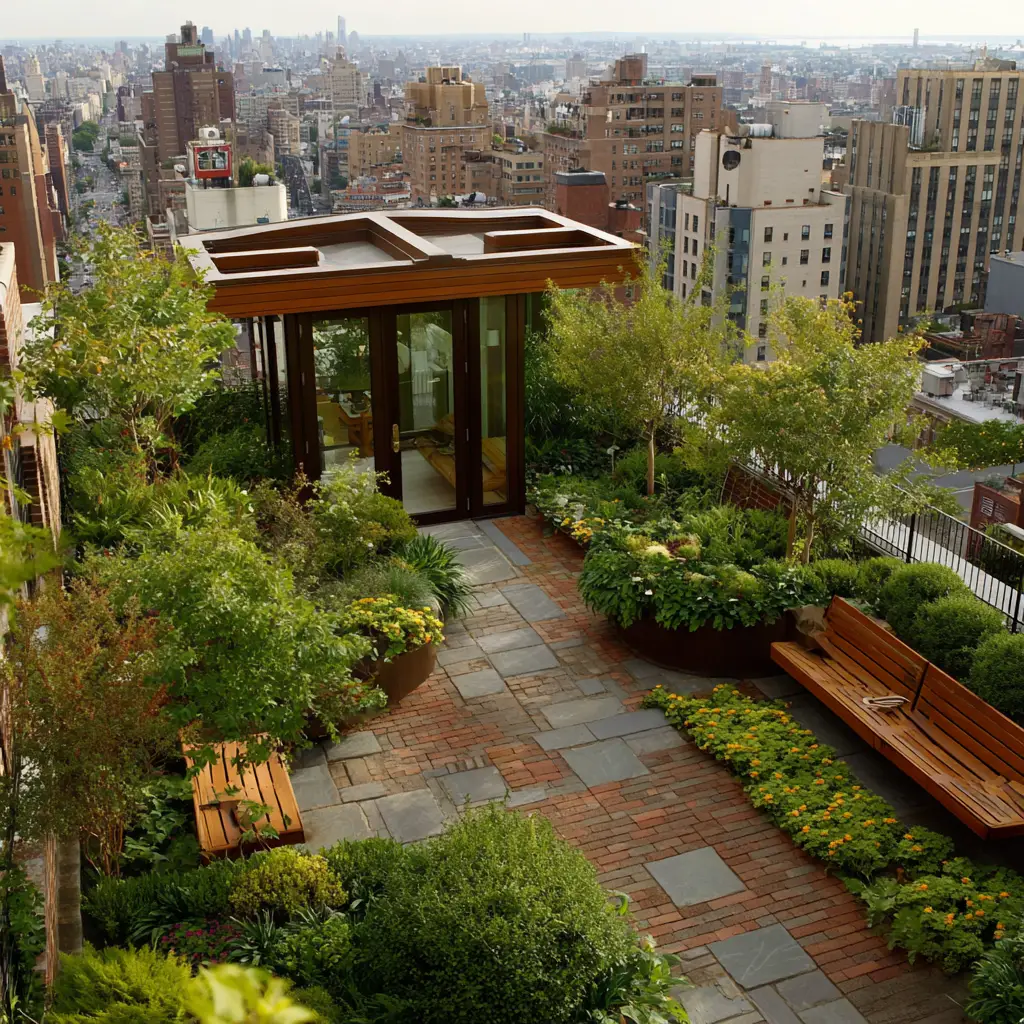
9. Fairy Garden Corners
Fairy gardens are whimsical and enchanting, especially when nestled into a shady corner or under a tree. Use miniature plants like mosses and ground covers along with small furniture, fairy figurines, and tiny houses. Add stepping stones and decorative pebbles to complete the magical scene. They’re a hit with children and spark creativity in gardeners of all ages.
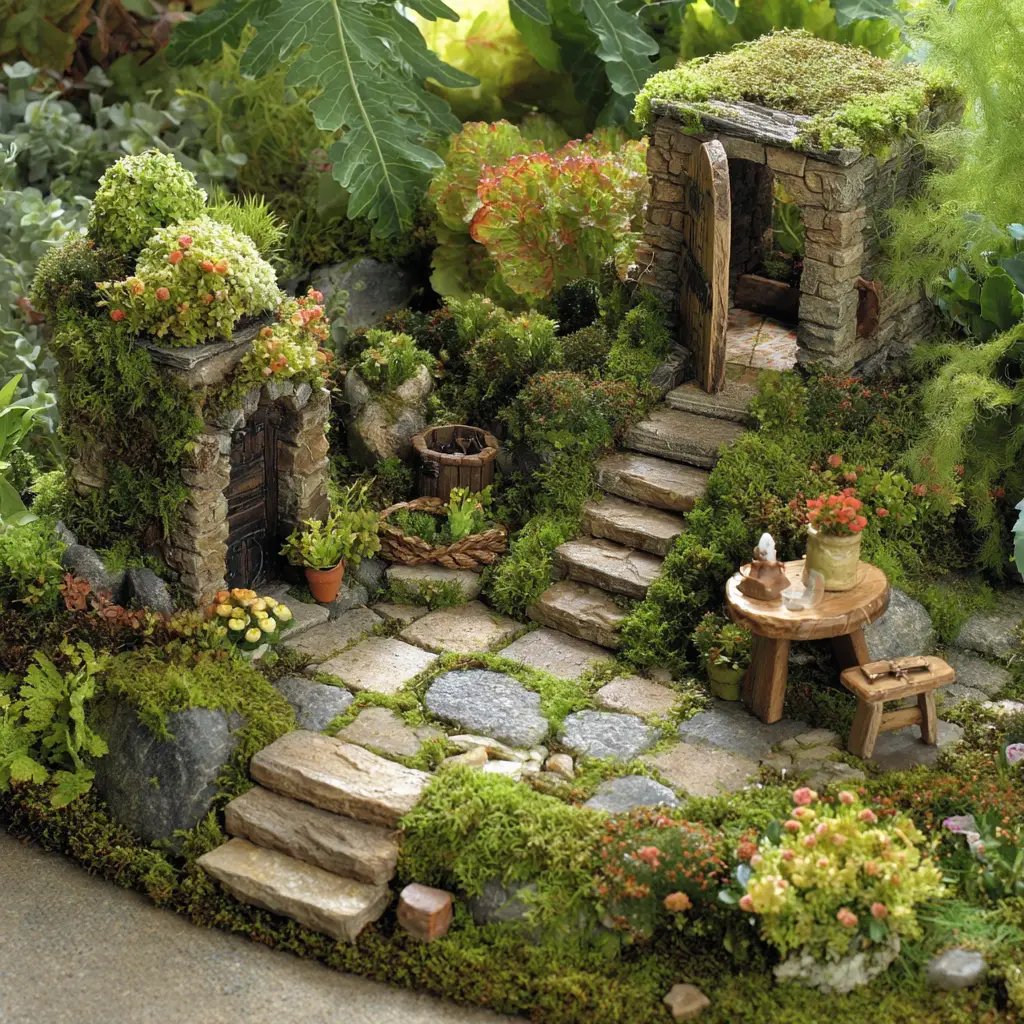
10. Raised Bed Garden
Raised beds are practical, attractive, and perfect for organizing your space. They offer better soil control, improved drainage, and easier access for planting and harvesting. Use wooden, stone, or metal frames to define garden plots for vegetables, herbs, or flowers. You can customize the height for comfort, making gardening more accessible for those with limited mobility.
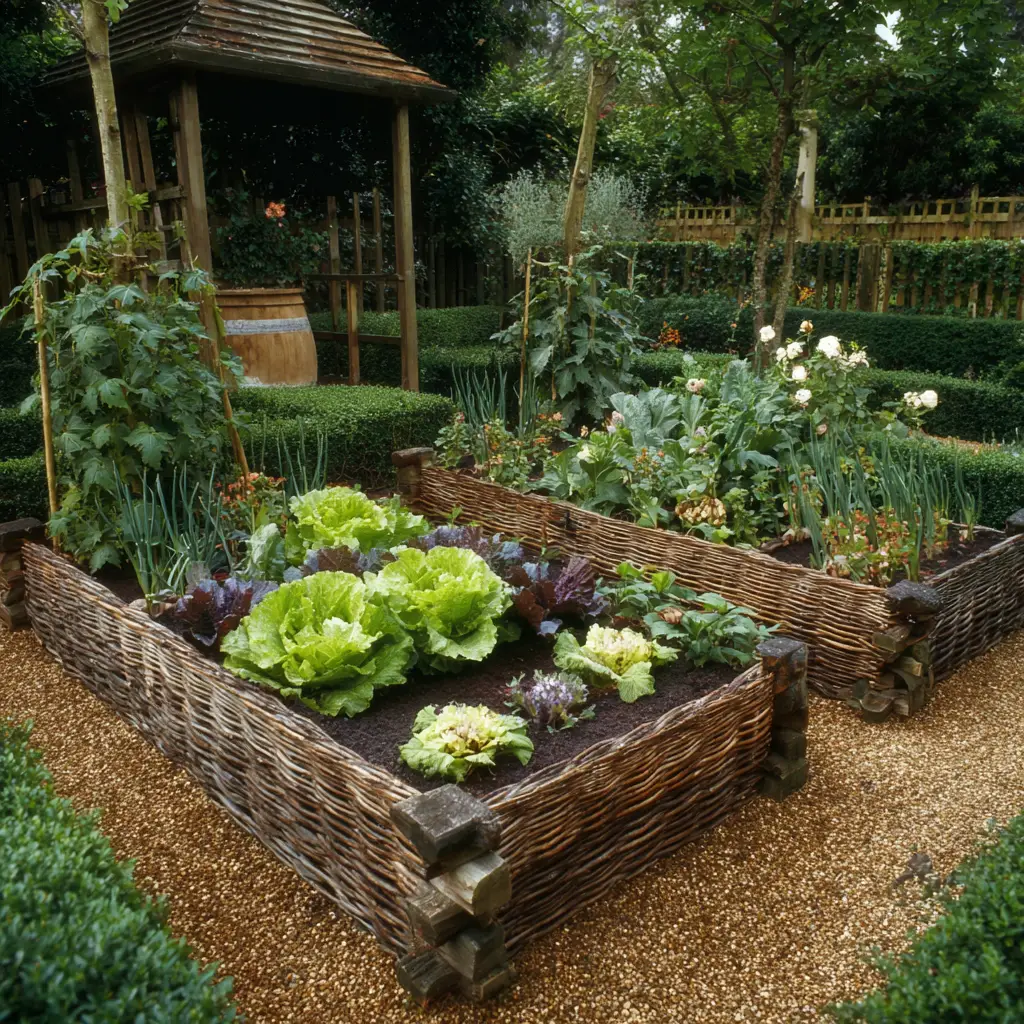
11. Water Feature Focus
Adding a water element like a fountain, pond, or small waterfall can elevate your garden’s ambiance. The sound of flowing water is naturally calming, and it can mask urban noise. Water features also attract birds and beneficial insects. Whether it’s a modern ceramic fountain or a natural-looking rock pond, the movement and reflection of water adds depth and life to any garden.
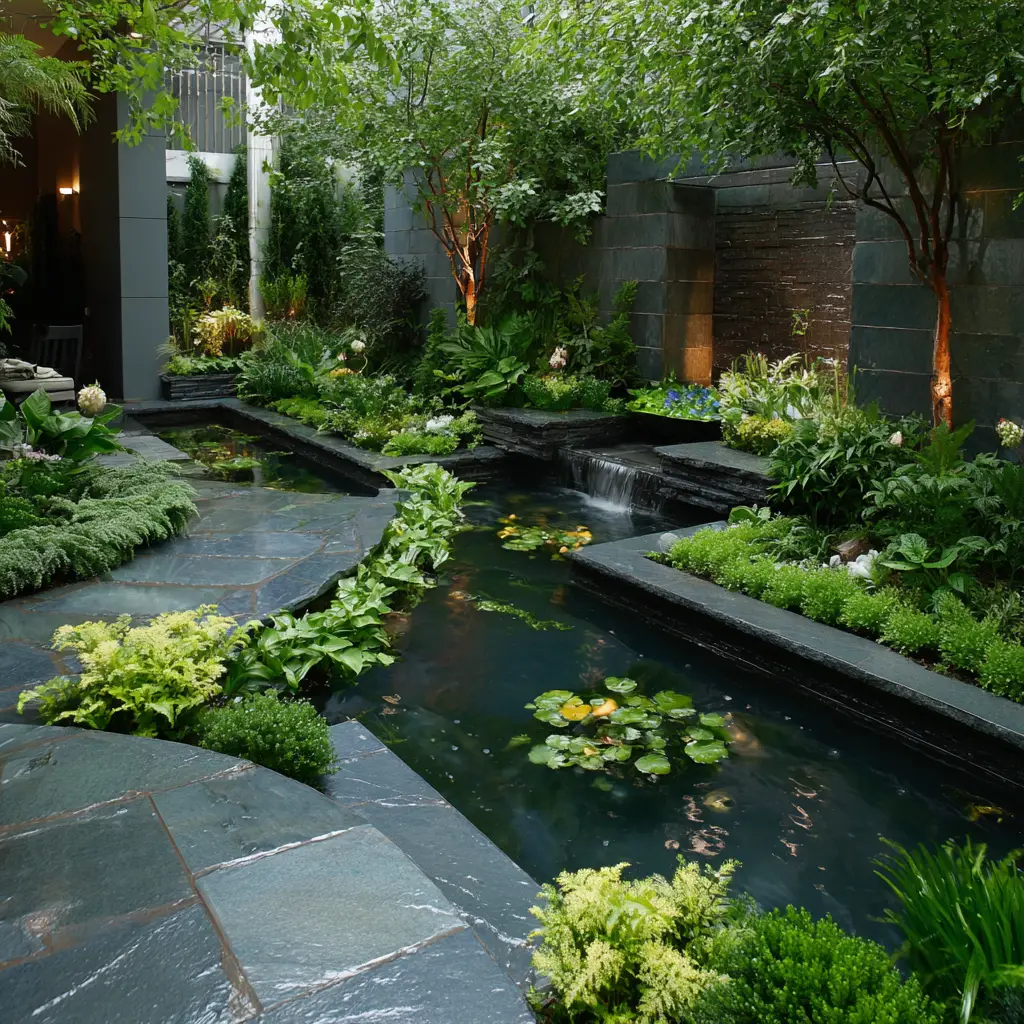
12. Shade Garden Sanctuary
Shaded areas can be just as lush and beautiful as sunny spots. Choose plants that thrive without direct sunlight, such as hostas, ferns, begonias, and astilbes. Incorporate textured foliage and muted colors for a soothing palette. Add a bench or hammock for a peaceful hideaway, and consider a stepping stone path winding through this cool, serene space.
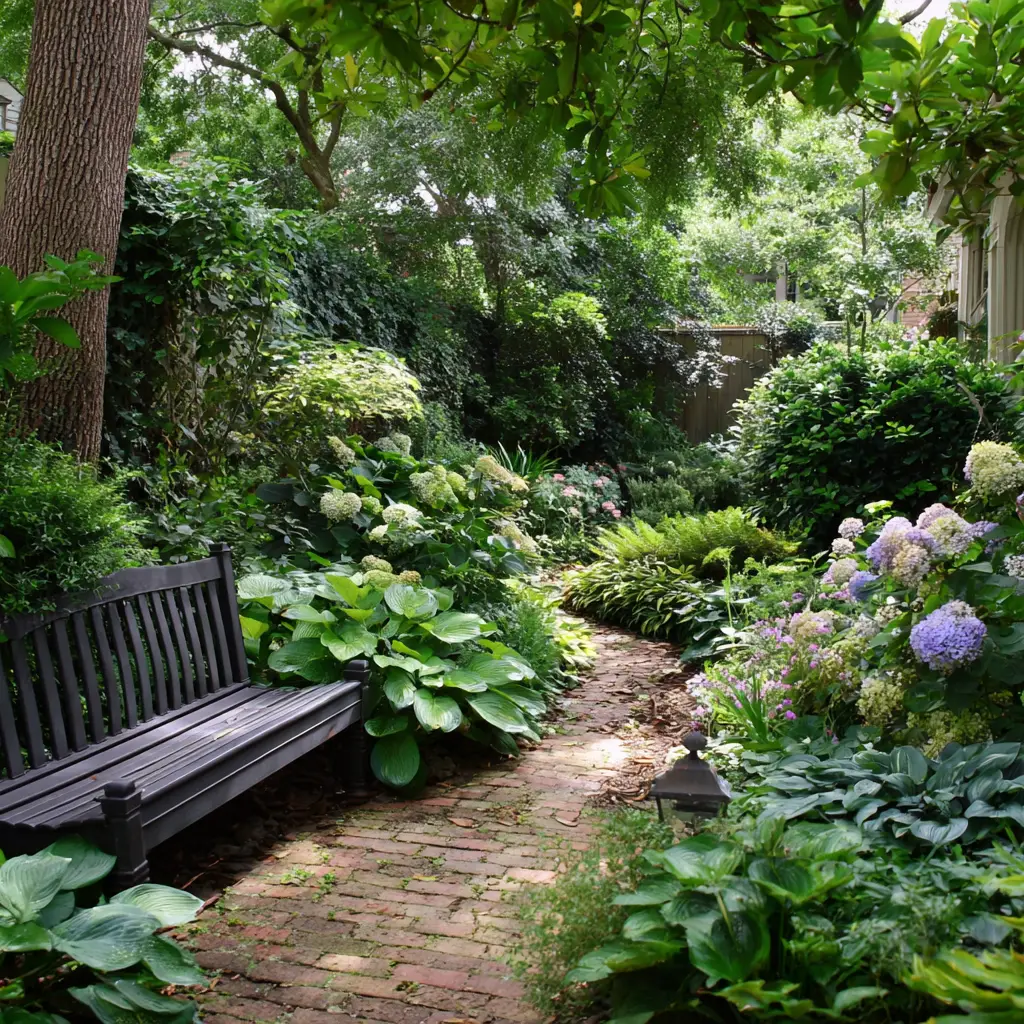
13. Pergola-Covered Patio
A pergola creates structure and shade, making it perfect for defining an outdoor room. Train flowering vines like clematis, jasmine, or grapevines over the top for beauty and fragrance. Hang string lights or lanterns for ambiance in the evening. Pair the pergola with comfortable outdoor furniture, a dining table, or even a fire pit to create an inviting area for gathering with family and friends.
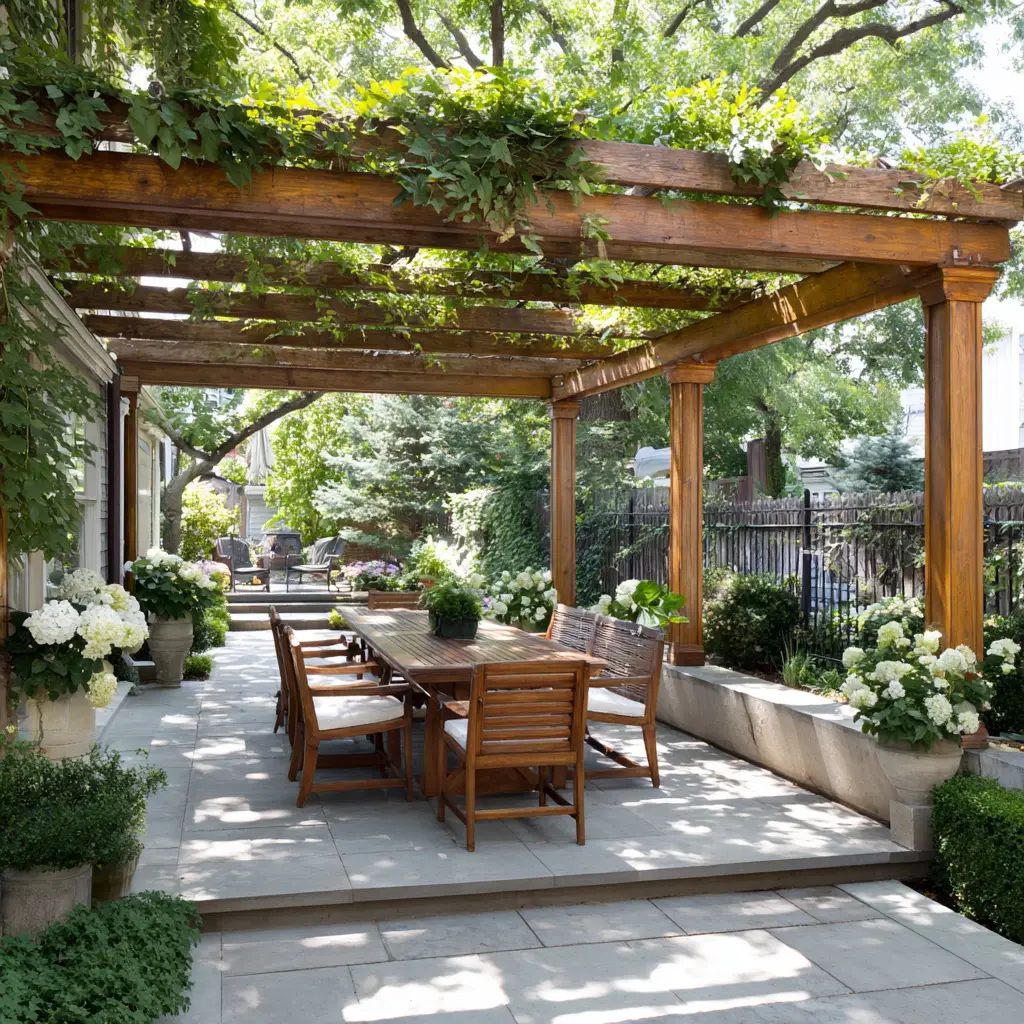
14. Boho Garden Nook
Bohemian-style gardens embrace creativity and individuality. Combine layers of textiles, colorful pots, handmade decorations, and diverse plantings. Use hanging lanterns, macramé plant holders, and weathered wood furniture to bring in that relaxed, eclectic vibe. A Boho garden feels informal, expressive, and deeply personal, perfect for daydreamers and artists alike.
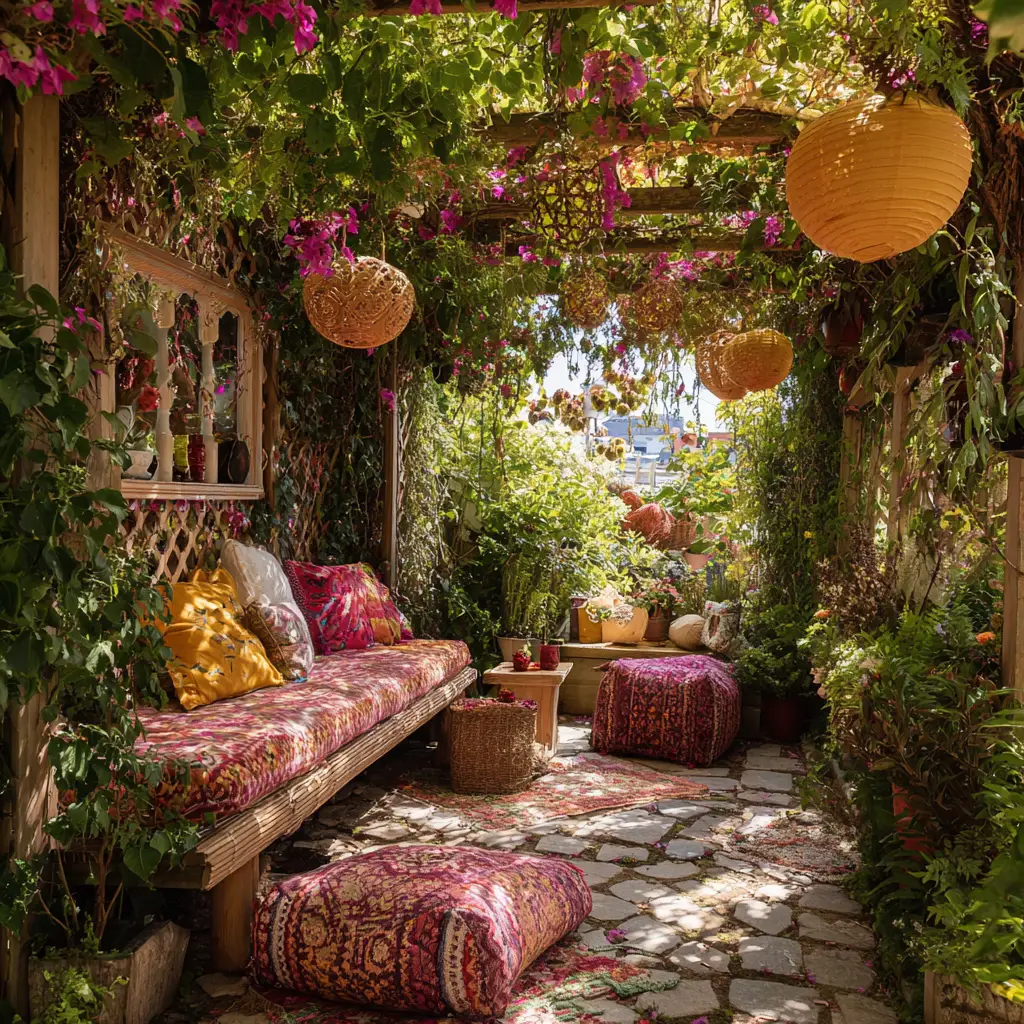
15. Color-Themed Garden
Design your garden around a specific color palette for a striking visual impact. A white garden, for instance, creates an ethereal, moonlit atmosphere, while purples and blues evoke calm and mystery. Use colored flowers, foliage, and even containers to reinforce the theme. Color planning helps create unity and makes the space feel more intentional.
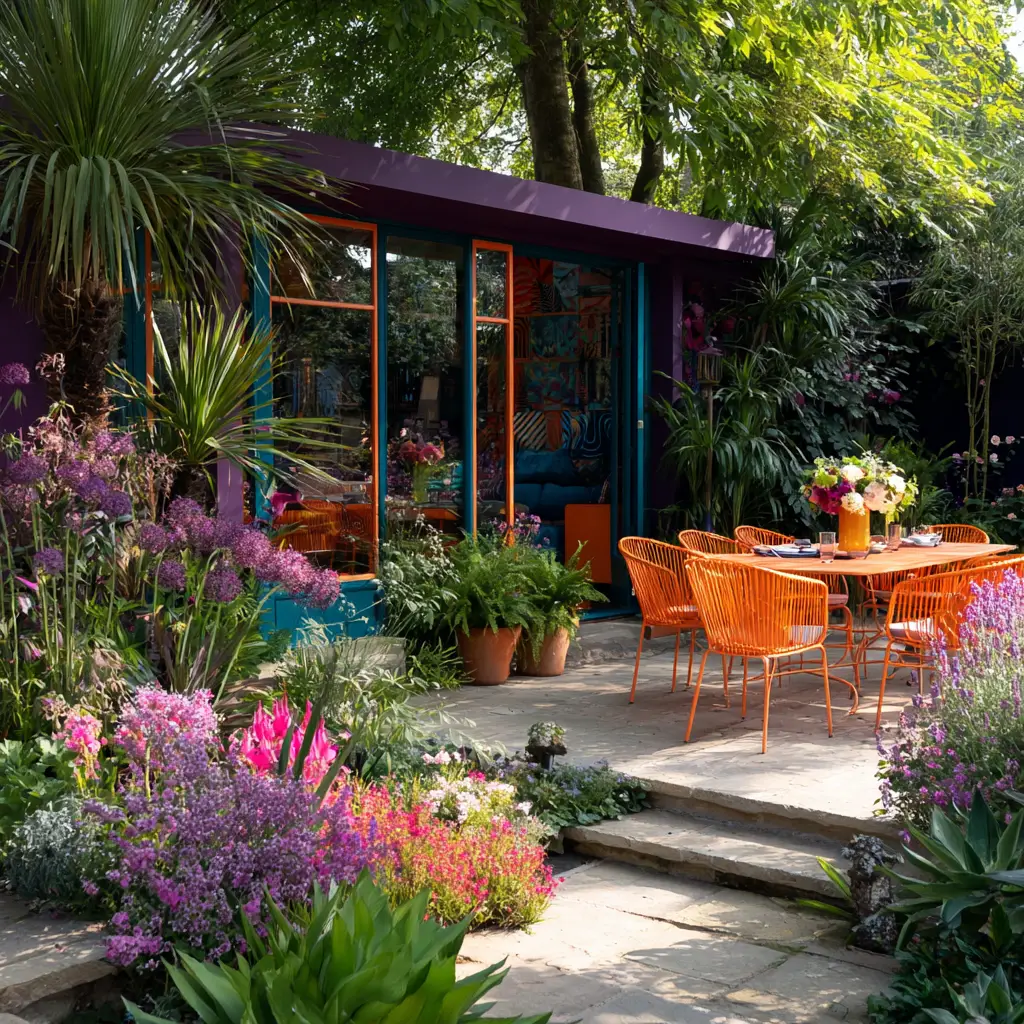
16. Herb Spiral Garden
Herb spirals are space-efficient and visually interesting. By building a spiral of soil and stone, you create microclimates that accommodate a variety of herbs with different sun and water needs. Place rosemary and thyme near the top where it’s drier, and basil or mint near the base where moisture collects. It’s a practical yet artistic way to grow culinary herbs.
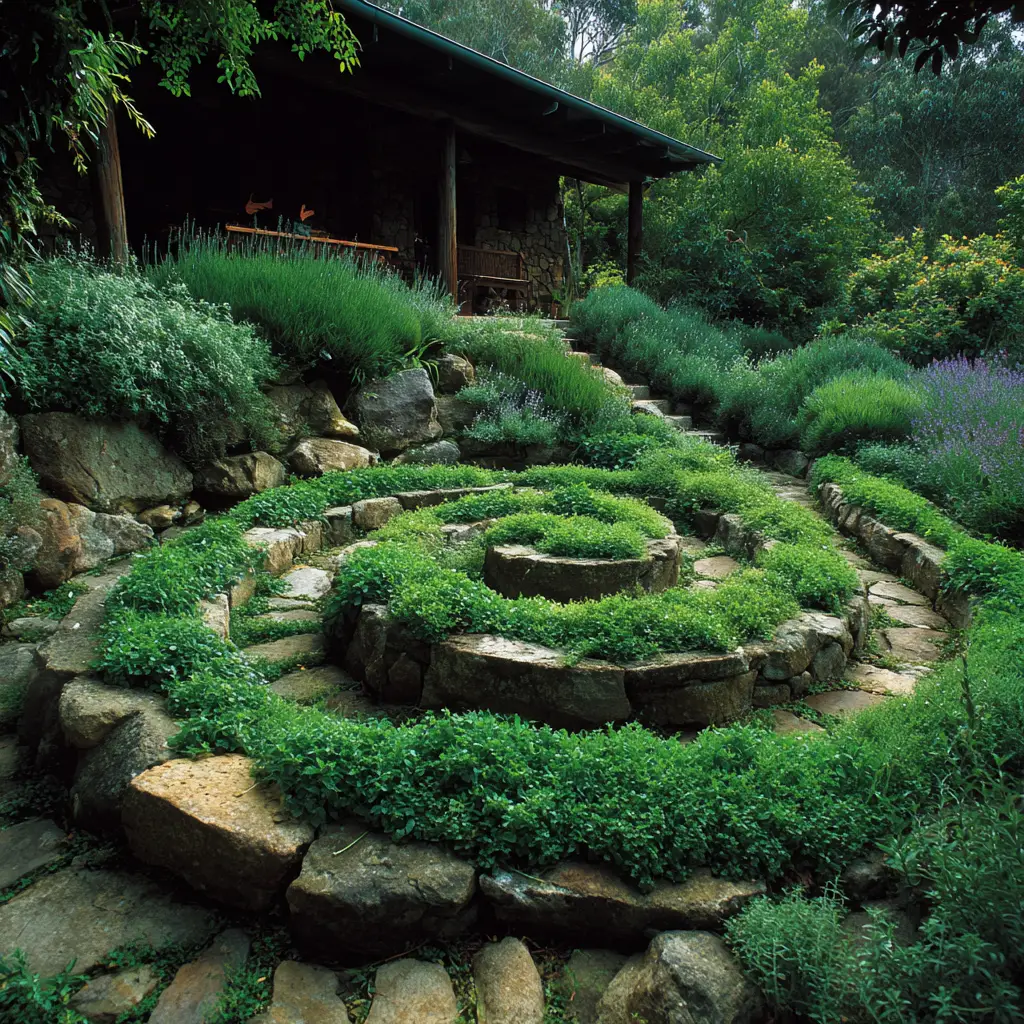
17. Native Plant Garden
Native plants are adapted to your region’s climate, which means they usually require less water, fertilizer, and maintenance. They’re also essential for supporting local ecosystems. Research what plants are native to your area and create groupings that mimic natural patterns. Native gardens are sustainable and resilient, especially in areas affected by drought or changing weather conditions.
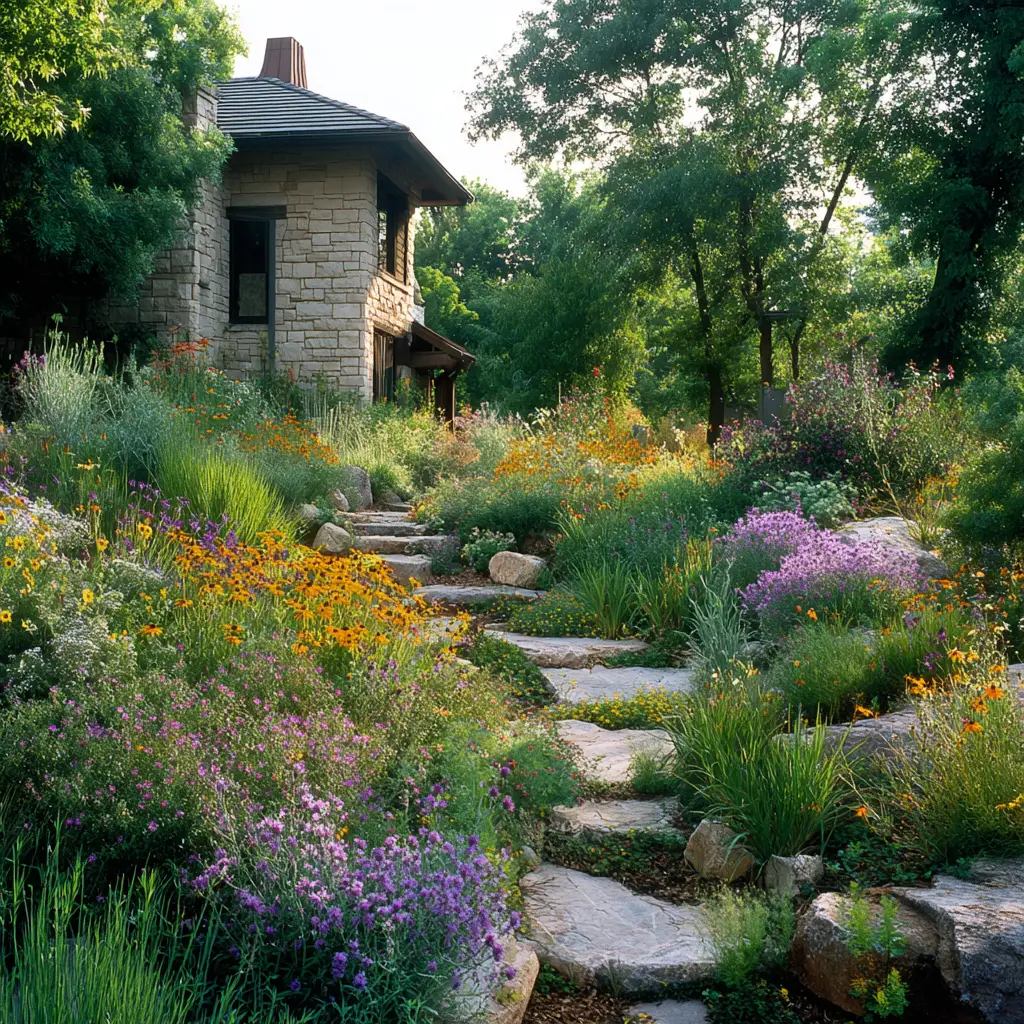
18. Gravel and Succulent Garden
For a low-maintenance and drought-resistant landscape, use gravel as ground cover and plant a mix of succulents like echeveria, agave, and aloe. These gardens are ideal for arid regions or anyone wanting to reduce water use. The sculptural shapes and varied colors of succulents make them excellent design elements. Add large rocks or driftwood for added texture.
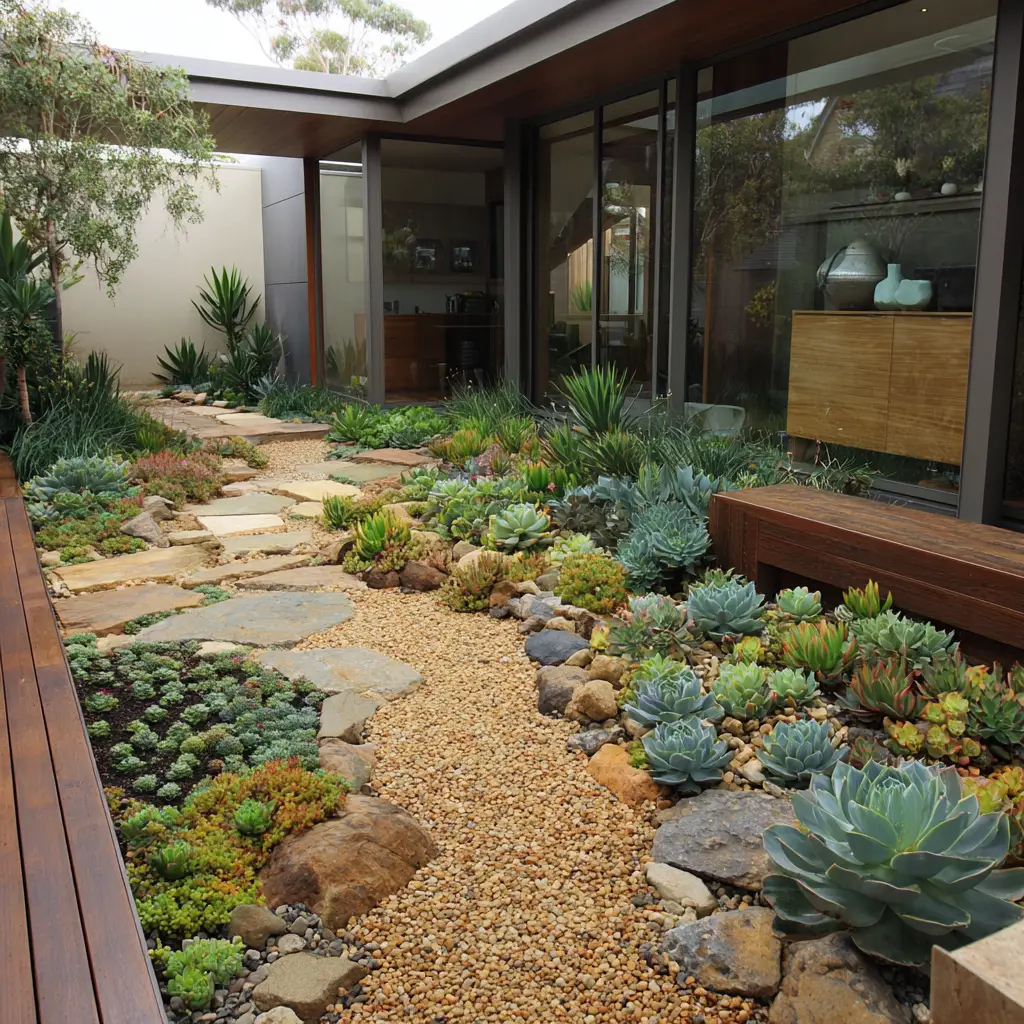
19. Romantic Rose Garden
A traditional rose garden is timeless and full of fragrance and charm. Combine different varieties like climbers, shrubs, and hybrid teas. Add benches, arbors, or trellises to provide structure and support. Companion plants like lavender or salvia help deter pests and enhance visual interest. Regular pruning and feeding will keep your roses healthy and blooming beautifully.
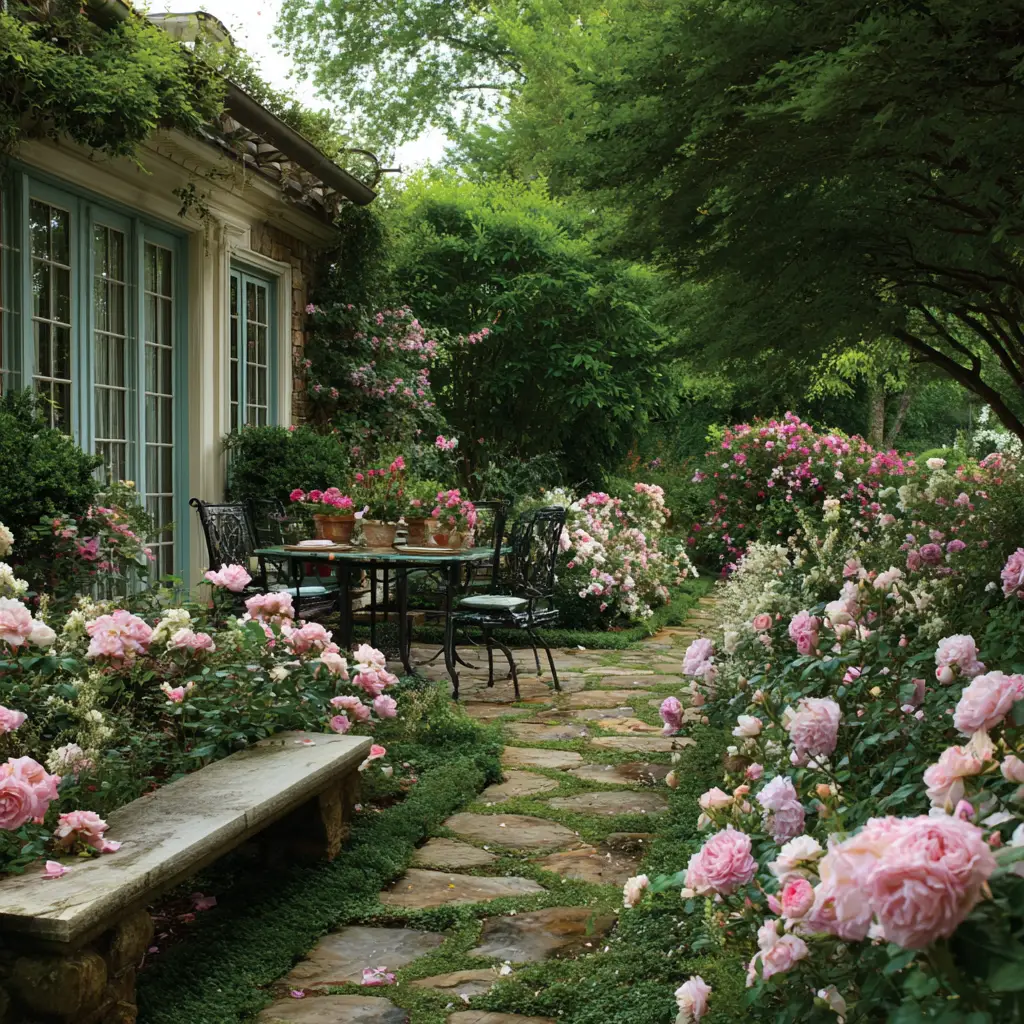
20. Pathway Garden
Garden paths help guide visitors and create a sense of journey. Use materials like flagstone, brick, or gravel to design winding walkways. Line paths with flowers, herbs, or low-growing shrubs. In narrow spaces, paths can make a small garden feel larger and more inviting. They also provide structure and flow to your overall garden layout.
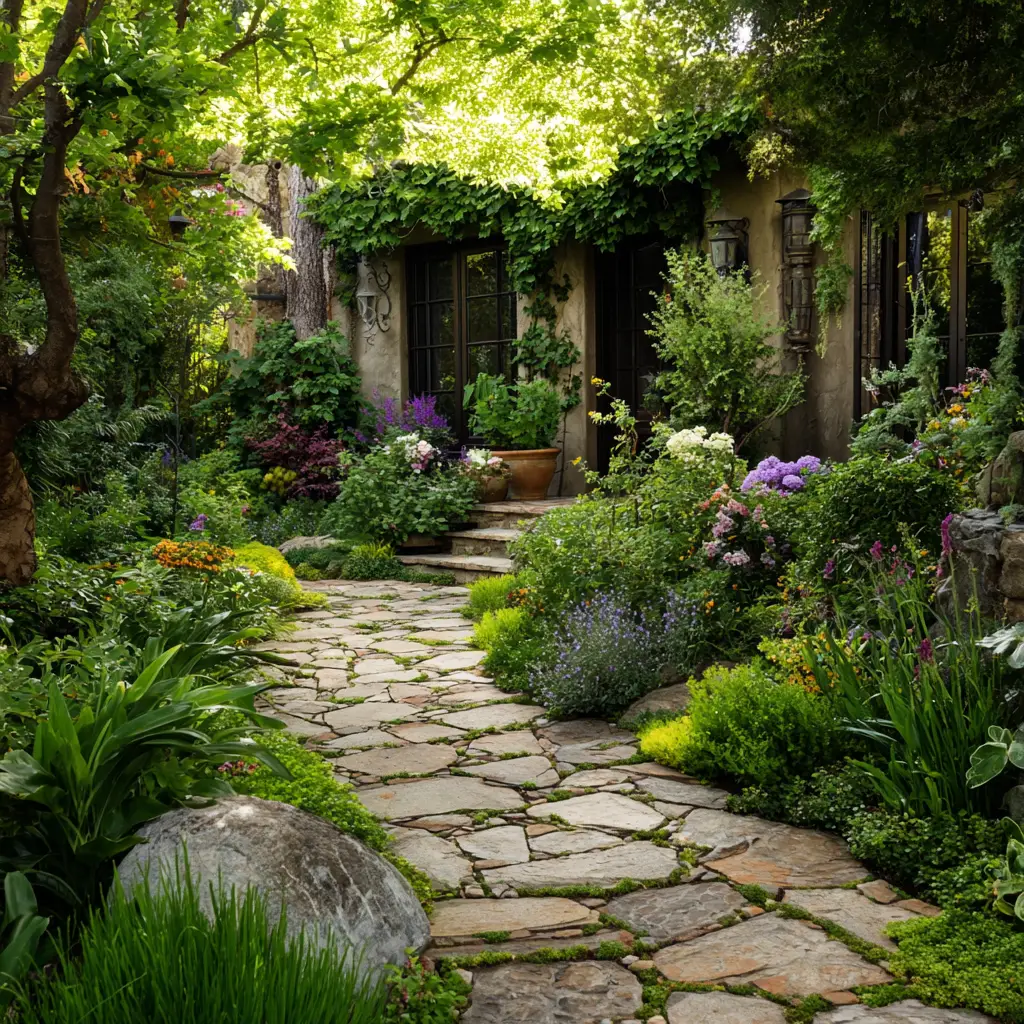
21. Balcony Jungle
Turn even the smallest balcony into a green sanctuary. Use a mix of hanging plants, railing planters, and shelves to maximize vertical space. Opt for plants like pothos, ferns, or trailing petunias to create lush greenery. Add cozy seating, fairy lights, and a small table to complete your mini urban oasis. Even a few plants can make a huge difference in how the space feels.
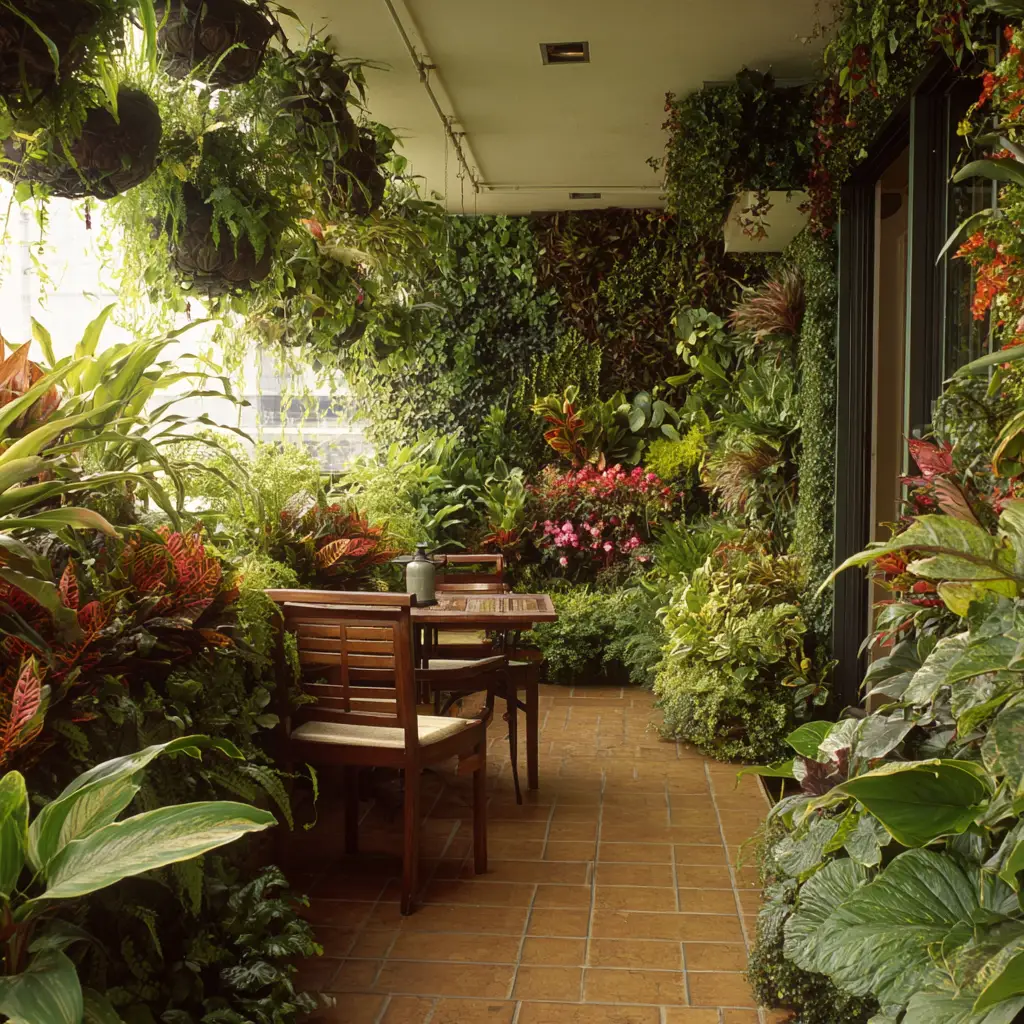
FAQs About Home Garden Design
What is the easiest type of garden to maintain?
A native plant or succulent garden tends to be the easiest to maintain. These plants are adapted to your local environment and often need minimal watering, pruning, or fertilizing.
Can I design a garden without a lawn?
Yes, absolutely. You can use gravel, pavers, mulch, or ground covers like creeping thyme to replace traditional grass. Lawn-free gardens are lower maintenance and often more environmentally friendly.
How do I start a garden with limited space?
Start small with containers or vertical planters. Focus on a few favorite plants and expand as you gain confidence. Even windowsills and balconies can be transformed with the right design.
Conclusion
Designing a home garden is more than just placing plants in the ground — it’s about curating a space that reflects who you are, how you live, and what brings you peace. Whether you’re drawn to the wild romance of a cottage garden, the serene simplicity of a Zen retreat, or the practicality of an edible landscape, each garden design has the power to transform your home and uplift your daily life.
